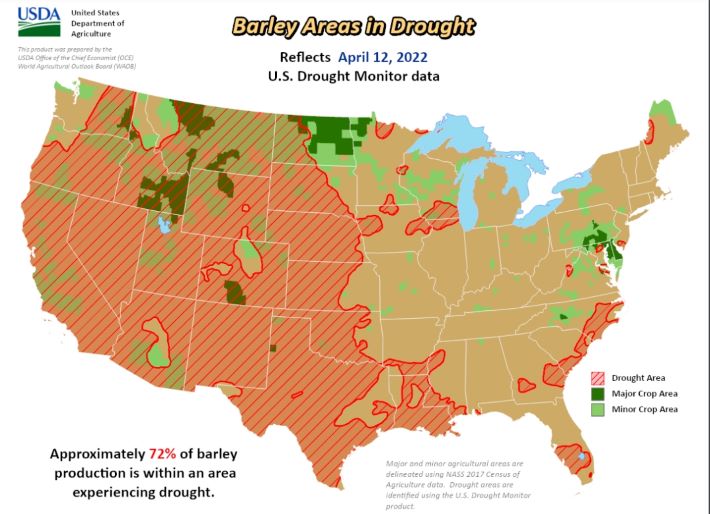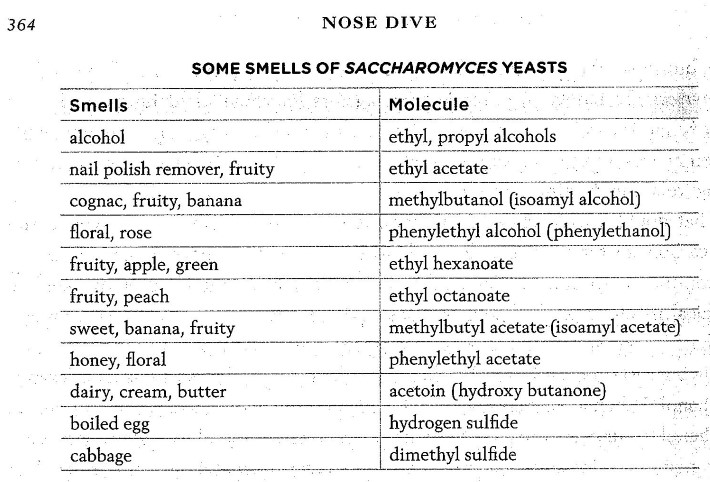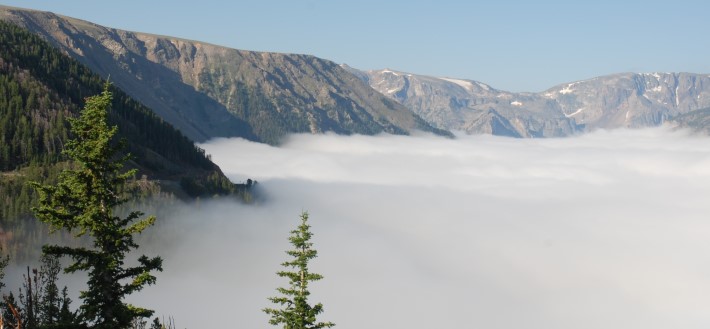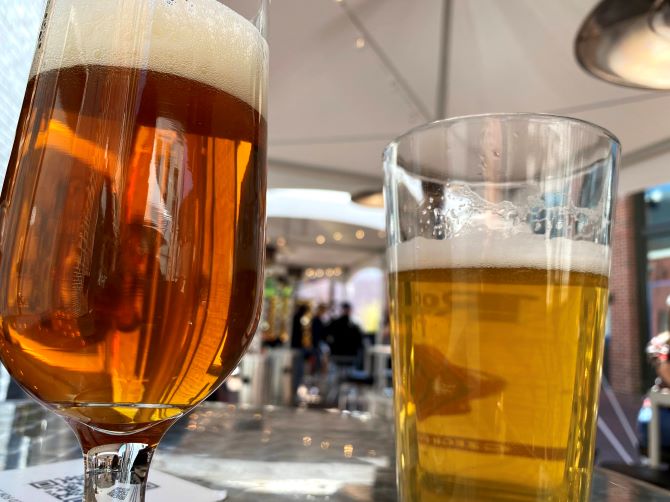Can you own terpenes?
Asked because this press release mentions “proprietary terpenes.”
Also a bit amused that somebody named Action Bronson is Elysian’s “Director of Dank,” and he says “Dank is a lifestyle.”
Can you own terpenes?
Asked because this press release mentions “proprietary terpenes.”
Also a bit amused that somebody named Action Bronson is Elysian’s “Director of Dank,” and he says “Dank is a lifestyle.”

If you thought malt prices were high already . . .
Approximately 72% of U.S. barley production is within an area experiencing drought. From the U.S. Drought Monitor released Thursday.
As mentioned Monday, when asked to contribute a list of “best books” to a new-ish book recommendation website I chose five related to aroma and flavor. You can see my picks here.
Whether the books did or did not specifically mention beer mattered little when I made the selections. However, since you are here for the beer, a couple of beer-related excerpts.
First, from Luca Turin in “The Emperor of Scent.”
“Look at beer, which is a very interesting cultural product. Beer smells like a burp. Gasses from someone’s stomach. Lovely. Again a product of fermentation, which is to say decay. Decay enhances smells and flavors, yet we have a sharp ability to identify decay, because decaying things will kill you. Bacterial and yeast decomposition.
“Which can give you ‘I wouldn’t touch that in a million years’ and, at the same time and in the same culture, mind you, ‘I will pay great sums to consume Rodenbach,’ which is a miracle of a beer from Belgium. A miraculous, powdery apple flavor. Those Rodenbach yeast have an I.Q. of at least two hundred. Fucking genius yeast.”
Second, a rather simple* table from “Nose Dive,” which really is the field guide the full title promises.

* Simple compared, for instance, to the one for “pungent spices: mustards and peppers.”
If you click around the site you will see each entry includes a “closely related book lists.” It pleases me that the one list related to mine is from Gordon Shepherd, since one of his books is among the five I point to. But, dang, I wish there were more lists related to aroma and flavor.

Perhaps the wires in my brain simply got crossed this week. I have no interest in commenting on the news after news after news related to the business of beer that just keeps coming. (Take a look at Brewbound and keep scrolling if you think you missed something. Or, if you recently did something you feel you should be punished for, go directly to Beer Twitter.)
Instead my thoughts keep going back to June of 2020, when economists Lester Jones (National Beer Wholesalers Association) and Bart Watson (Brewers Association) discussed what was going on with beer sales only a few months after the world shut down. Jones planted this seed:
“When you look how the brewing industry has evolved . . . in that 2008, 2010 recession we saw a lot of different business models. We saw people who were a little bit more of the taproom model, where they wanted to be small, they wanted to be local. They had certain business models they were pursuing. Then you had players who were a little more lifestyle oriented, and they were the guys working on their second careers. They were doing it for a lifestyle versus other people who were doing it for a living.
“I think at this point we’re going to see a division in the industry as the people who were in it for the lifestyle of having a small little brewpub in a local community versus the people who were in there with the intentions of growing a real brewing business, widely distributed, with a widely recognized brand. These two business models are going to split off. This is the event that will do it.”
The beer business and culture. Culture and the beer business. Can they be separated?

Jeff Alworth wrote about something new he’d like to see develop in 2022: American lager.
He started with a question from Ben Howe at Otherlands Brewing. “(It) feels a bit strange to be making a perfect recreation of a German beer. I wonder what an American lager would look like if we developed a tradition as rich as Franconia’s.”
Alworth has some suggestions, obviously influenced by the concept of “national tradition” he puts forth in the new edition of “The Beer Bible” (if you haven’t bought and read it, you should). It’s no secret that I have some affection for hops and regionally sourced and produced beers, and the eight of you who read “Brewing Local” know I’m an authenticity skeptic who thinks it is a mistake to saddle brewers with somebody else’s tradition.
So I’m mostly good with where Alworth ends up.
“Imagine lagers like this: made with base malts from barley grown and malted locally, a more American hop schedule with local lager hops (soft bitter charge, late kettle additions, whirlpool additions, and small dry-hop additions), aged in a Brett-free oak foeder, served unfiltered and lively with the flavors of all those ingredients. That’s a pretty unusual, pretty American beer.”
I type mostly because I’m not sure what word I’d substitute for American, but I’d rather think in terms of a beer tasting like it is a Birds Fly South beer, or a Good Word beer or a Fair Isle beer.
And practically speaking, because one thing always leads to another, I don’t look forward to seeing American helles or American pils “defined.” Because I know some people haven’t learned anything from the recent blabbing away about style(s), IPA and beyond.
(Should you be curious, the photo at the top appeared here earlier this year. Both of those beers were categorized as Czech pils.)
CURLING
Actually, “beer curling,” which uses small kegs instead of curling stones. PLUS the beer garden at Land-Grant Brewing in Columbus, Ohio, has 15 heated igloos.